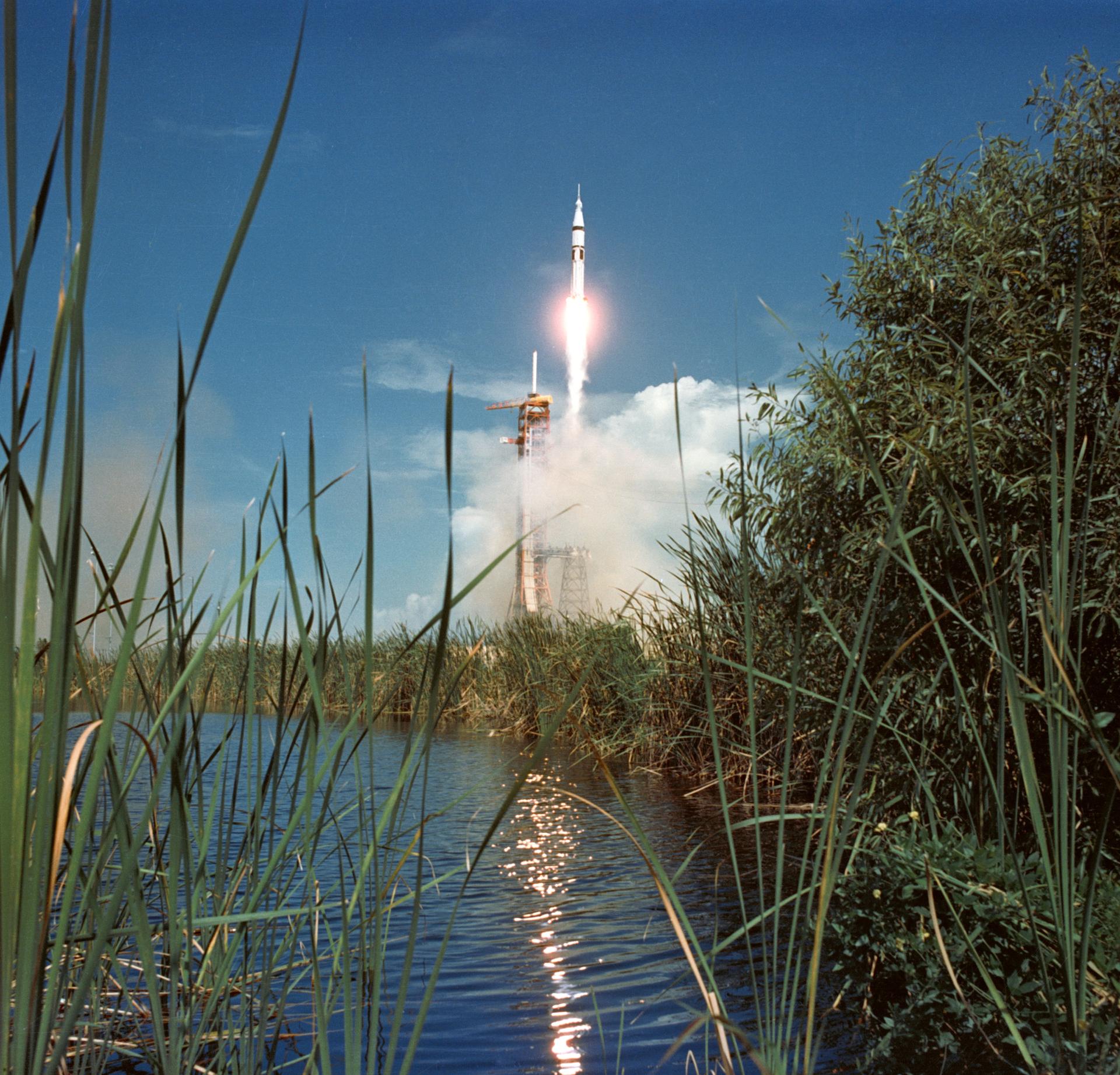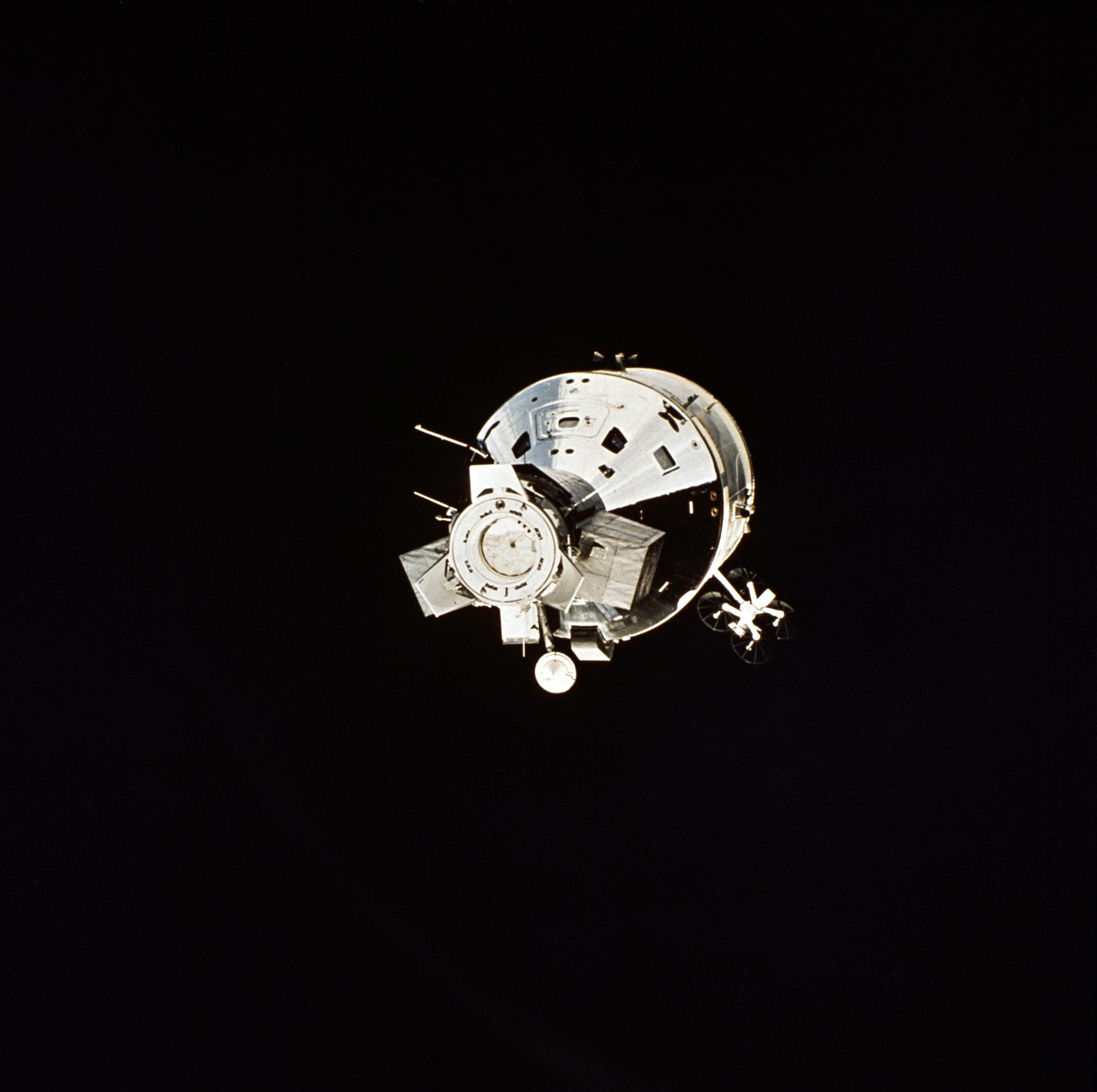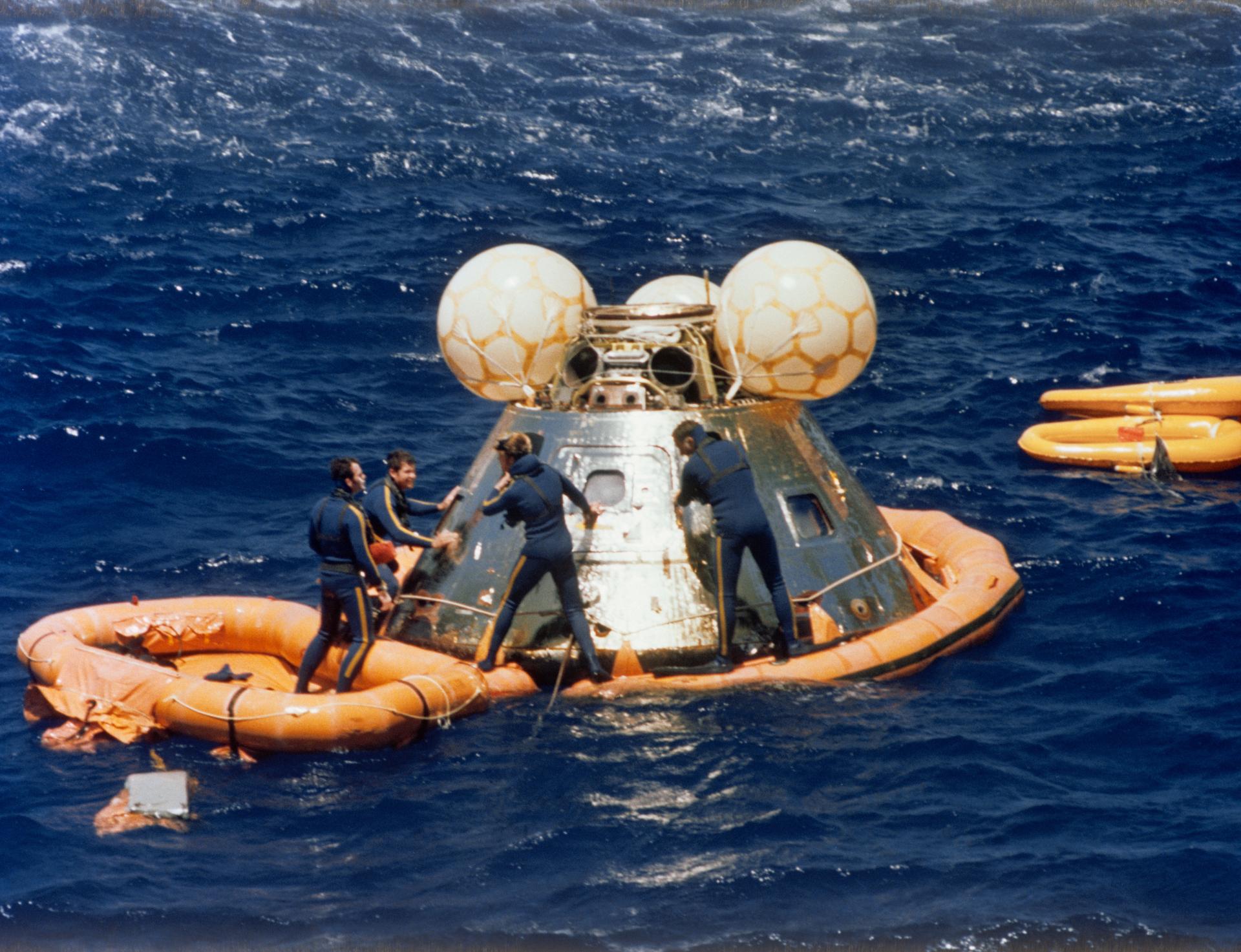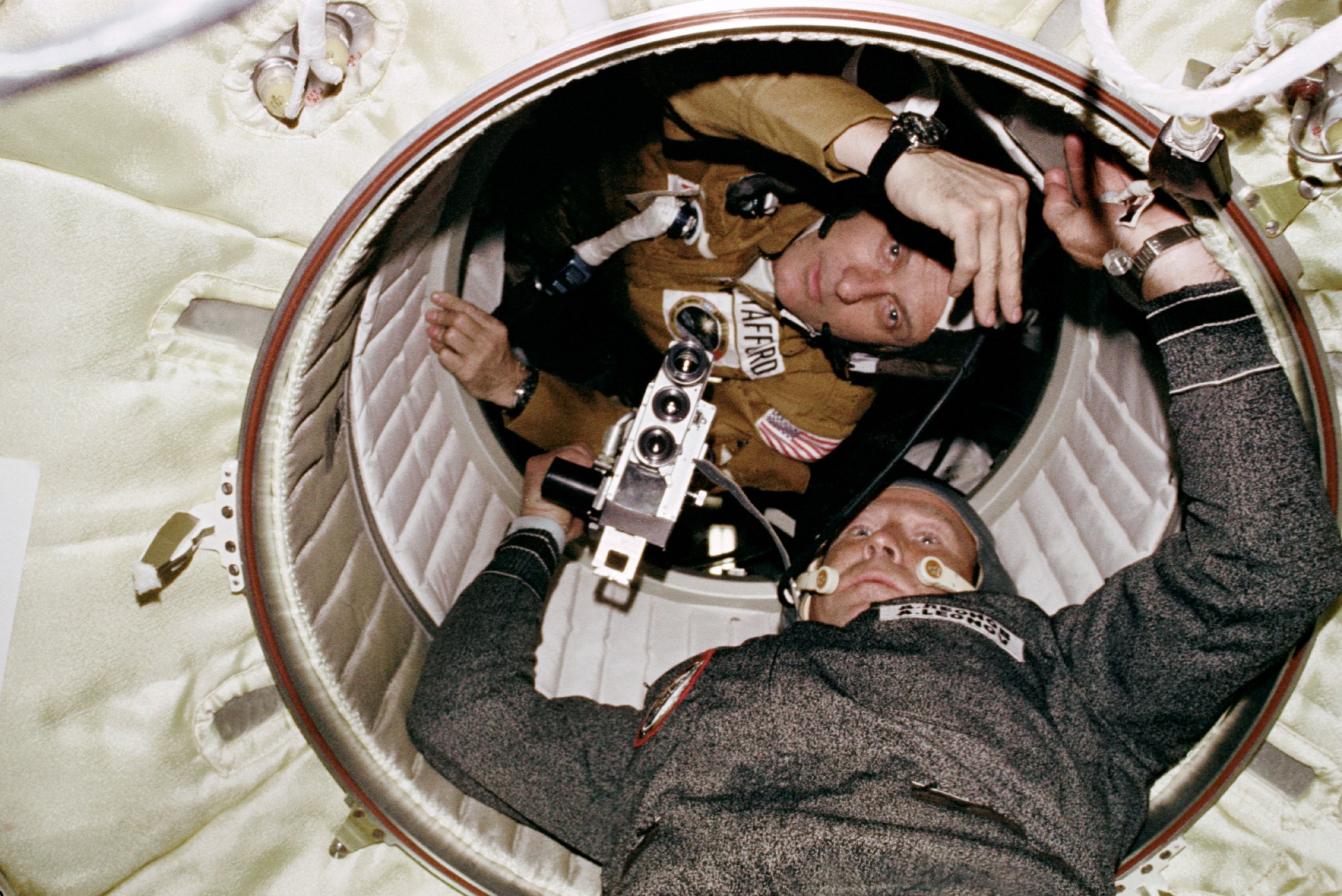By Linda Herridge
NASA’s John F. Kennedy Space Center
(with NASA historical mission information)

Celebrating its 45th anniversary this month, NASA’s Apollo-Soyuz Test Project (ASTP) was the first time that spacecraft from two different countries, the U.S. and the Soviet Union (Russia today), achieved rendezvous, docking and undocking in space. The mission was five years in the making; the name of the mission became official on June 30, 1972.
To achieve the mission, the Soviet Soyuz 19 spacecraft and rocket launched on July 15, 1975, at 9:20 a.m. EDT from the Baikonur Cosmodrome in Kazakhstan. On that same day, the Apollo 18 capsule atop the Saturn 1B rocket, designated AS-210, lifted off from Launch Pad 39B at Kennedy Space Center in Florida, at 3:50 p.m. EDT.
Crew members aboard the Apollo capsule were Commander Thomas P. Stafford, Docking Pilot Donald K. “Deke” Slayton, and Command Module Pilot Vance D. Brand.
Stafford’s previous spaceflights included Gemini VI in December 1965, Gemini IX in June 1966, and Apollo 10 in May 1969. Slayton and Brand were making their first spaceflights.
“I remember that morning, I walked out to the gantry on Apollo-Soyuz and looked down and said, ‘I bet this is the last manned launch we’re going to have for five years,’” Stafford said during a NASA oral history interview.
Cosmonauts aboard the Soyuz were Commander Alexei Leonov and Engineer Valeriy Kubasov.

After reaching low-Earth orbit, the Apollo crew began its catch-up journey toward the Earth-orbiting Soyuz spacecraft. Before Apollo docked with Soyuz, the crew separated from the Saturn’s second stage, known as the S-IVB upper stage, and maneuvered around to extract the docking module. Specifically designed for this mission, the docking module served mainly as an airlock to raise or lower the pressure between 0.34 and 0.68 atmospheres when moving through its tunnel from one spacecraft to the other. This was done through the use of pressure equalization valves with both hatches closed. A systems module inside the docking module contained control and display panels, a VHF/FM transceiver, an environmental control system and storage compartments. Other equipment included oxygen masks, a fire extinguisher, floodlights and handholds, and a junction box for linking Soyuz communications circuits to Apollo.
The two spacecraft docked together on July 17 at 1:10 p.m. EDT. Stafford opened the hatch leading into the Soyuz orbital module, and the first international handshake took place with Leonov at the entrance to the Soyuz. Greetings, flags and gifts were exchanged.
During the mission, the Apollo and Soyuz spacecraft remained docked for about 47 hours. Several activities, four crew transfers and the completion of a number of joint scientific experiments and engineering investigations were achieved. Some of the crew’s activities were televised nationally.
ASTP marked the successful testing of a universal docking system and served as a major advance in efforts to pave the way for conducting joint experiments and the exchange of mutual assistance for future international space exploration.

On July 19, the crew of Apollo undocked from Soyuz. The Soyuz remained in space for two days before returning to Earth on July 21. The Apollo crew remained in orbit for another three days and performed additional experiments. On July 24, the crew began the descent and re-entry into Earth’s atmosphere. The spacecraft landed in the Pacific Ocean near Hawaii at 6:18 p.m. EDT. The capsule and crew were retrieved by the USS New Orleans.
The mission marked the last time U.S. astronauts would venture into space until April 12, 1981—the first launch of the agency’s Space Shuttle Program. The next time U.S. astronauts and Russian cosmonauts would fly together would not be until 1994, three years after the fall of the Soviet Union, and the next time a U.S. and Russian spacecraft would dock together would be in June 1995.


























